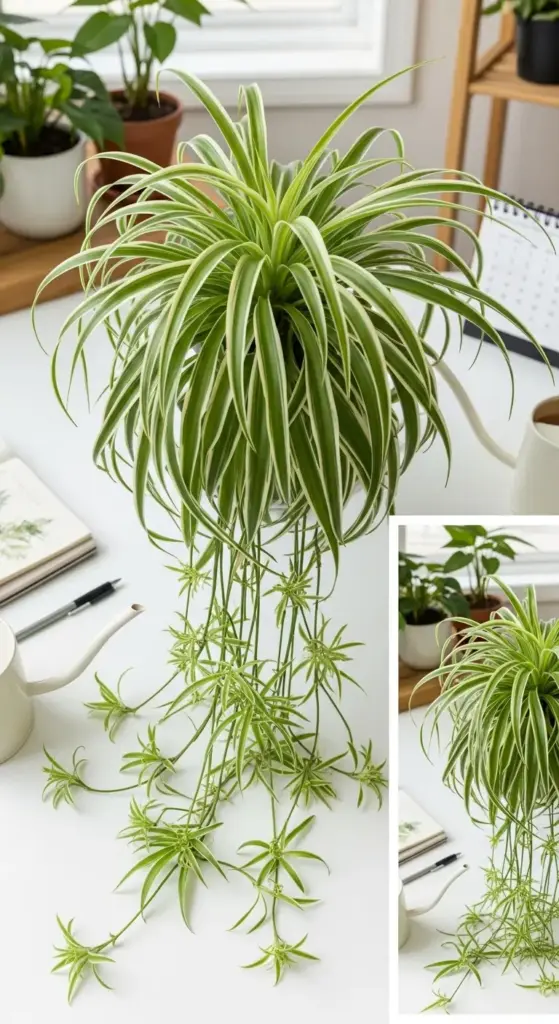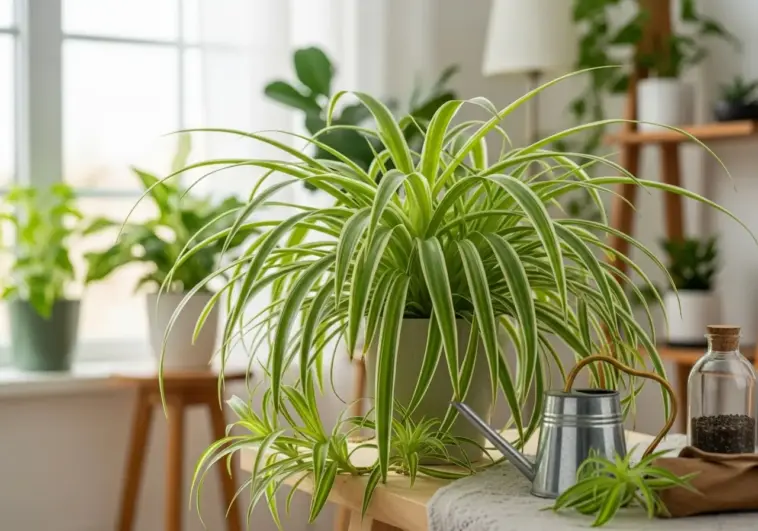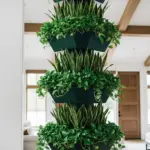Did you know that spider plants can live for over 50 years with proper care? Yet most of us struggle to keep these “easy” houseplants happy for more than a few months!
If you’ve ever wondered why your spider plant looks lackluster while your neighbor’s cascades beautifully from her living room shelf, you’re not alone.
As someone who’s transformed countless sad spider plants into Instagram-worthy showstoppers, I’m excited to share the insider secrets that master gardeners have been using for decades.
These aren’t your typical “water when dry” tips – these are the game-changing techniques that separate thriving plants from surviving ones. Ready to become the plant mom your friends come to for advice?
Secret #1 – The “Stress Training” Watering Method

Okay, I’m gonna be totally honest with you here – when I first heard about stress training for spider plants, I thought it was complete nonsense. Like, why would I want to stress out my poor little green babies?
But then my neighbor showed me her absolutely stunning spider plant that was literally dripping with babies. I’m talking like 15+ plantlets cascading down like a green waterfall!
The Science Behind Plant Stress (Trust Me, It Works)
Here’s the thing about Chlorophytum comosum – they’re survivors by nature. In their native South Africa, these plants deal with serious drought cycles.
When you keep them constantly moist and comfortable, they get lazy. They have no reason to reproduce because life is too easy.
But when you mimic those natural drought stress cycles, something magical happens. The plant thinks “Oh no, I might die – better make some babies fast!”
My Stress Training Schedule (After Many Failed Attempts)
I learned this the hard way after killing three spider plants with my “loving” daily watering routine. Here’s the watering schedule that actually works:
Week 1-2: Water normally when top inch of soil is dry Week 3: Let the soil get completely dry for 5-7 days Week 4: Resume normal watering
The key is that complete dry period. I used to chicken out after 3 days because the leaves would start looking a bit droopy.
Signs Your Plant is Loving the Stress
Within about 6 weeks of starting this method, I noticed some incredible changes. The variegation on the leaves became way more pronounced – those cream stripes were practically glowing!
But the real magic happened around week 8. Tiny little plantlet buds started appearing on the runners. I literally squealed when I saw the first one!
Your spider plant will also develop thicker, more robust leaves. They’ll feel almost succulent-like compared to the thin, floppy leaves from overwatering.
The Mistakes That’ll Ruin Everything
Don’t make my rookie error of extending the dry period beyond 7 days. I got cocky once and let mine go 10 days – the leaf tips turned brown and crispy, and it took months to recover.
Also, never start stress training on a newly repotted plant. I learned this one the expensive way. Give your plant at least 4-6 weeks to establish after repotting before you begin.
Temperature matters too! If it’s winter and your house is below 65°F, reduce the dry period to just 3-4 days. Cold + drought = dead plant.
Ready for the Next Game-Changer?
Once you’ve mastered this stress training technique, you’re gonna want to know about the lighting trick that makes those cream stripes absolutely pop. The positioning secret I’m about to share in the next section literally transformed my plain green spider plant into a showstopper that everyone asks about.
Click the next button below to discover the strategic light positioning method that master gardeners use to maximize variegation!










GIPHY App Key not set. Please check settings